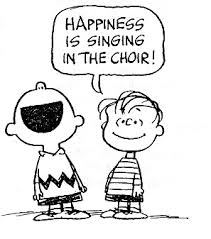One of the overriding themes in Dickens’s A Christmas Carol, and the leading theme in Master Chorus
Eastside’s A “Choral” Christmas Carol, is
the struggle between darkness and light.
Early on it is darkness that dominates.
For example, Scrooge heats his office with a tiny coal fire that sheds
little light or warmth. He lives in “a gloomy
suite of rooms” inside a fog shrouded building whose entryway is black and old
and whose yard is draped in impenetrable shadow. The only light we see is when the face of his
deceased partner, Jacob Marley, appears briefly in the door knocker. But it is dismally lit “like a bad lobster in
a dark cellar.”
(I used to think this was a Dickensian joke until I
discovered that decaying crayfish actually glow with eerie phosphorescence!)
And again when Scrooge’s bedroom fire leaps up in
frightened recognition as Marley’s ghost proceeds upward from the dark cellar and
into the room. But it falls away again,
for no light can be sustained in such a miserable presence.
But darkness begins to give way as the story
progresses. When the Ghost of Christmas Past
appears, light flashes up in Scrooge’s bedroom; it comes from the “bright clear
jet of light” that emanates from the Ghost’s head.
It carries an extinguisher cap for a hat,
and at the end of our Stave I Scrooge struggles to cover the Ghost’s light with
the extinguisher. But even though he presses
down with all his might the light is unquenchable; it streams from under it “in
an unbroken flood upon the ground.”
Light grows even brighter with the Ghost of Christmas
Present. Scrooge lies on his bed, “the
very core and center of a blaze of ruddy light,” which pours in upon him from
the next room. When he follows the light
he finds that the room has been transformed!
Bright gleaming berries glisten everywhere, the leaves of holly,
mistletoe and ivy reflect the light like mirrors, and a mighty blaze roars upon
the decrepit hearth. The huge jolly Ghost
himself bears a glowing torch, from which he dispenses blessings, and he wears
a holly wreath hung with shining icicles.
But then, with the final visitation, from the Ghost of
Christmas Yet to Come, the darkness becomes overpowering. The Phantom is draped and hooded in a deep
black garment, as black as the surrounding night that conceals him, for the
future—“will be” or “may be”?—is murky.
The scenes the Ghost leads him through are all blackness
and death: of the body, of the soul, sometimes both. Again the only light we see is the pale light
that barely illuminates a dead body that, unbeknownst to Scrooge, is his own
body, bereft and unwashed, his Christmas yet to come. It is only when Scrooge confronts his bitter end
that the light finally penetrates and he embraces it. And pure natural light floods the tale! He opens his window in response to the lusty
peals of church bells and sees “Golden sunlight; Heavenly sky; sweet fresh air;
merry bells. Oh, glorious! Glorious!” And,
as is only fitting, when Bob Cratchit arrives the day after Christmas, Scrooge
tells him to stoke up the fires and buy another coal-scuttle. No more darkness in that office!
There were many carols that cried out for insertion into
the above scenes: Deck the Halls to
accompany the Ghost of Christmas Present, Carol
of the Bells when Scrooge hears the church bells on Christmas Day, the
heartrending Coventry Carol for Tiny
Tim’s death scene, to name just a few. But
there was only one carol that could embody the darkness versus light theme, the
lovely old English Sussex Carol. It’s fourth verse especially captures what I
tried to create with this production.
From out of darkness we have light,
Which made the angels sing this night:
“Glory to God and peace to men,
Now and forever more, Amen.”
This carol gleams like a golden thread throughout our Christmas
drama; we sing it at the beginning and end of Stave I, it opens Stave II, we
hum it in a minor key to usher in Tiny Tim’s death scene, and it closes Vaughan
Williams’ beautiful Fantasia on Christmas
Carols, which we use as the finale of the production. Enjoy
this arrangement by the Kings College Choir, and as you listen, know that the
light wins out in this wonderful tale.
Dr. Linda Gingrich
Artistic director and conductor
Master Chorus Eastside

















